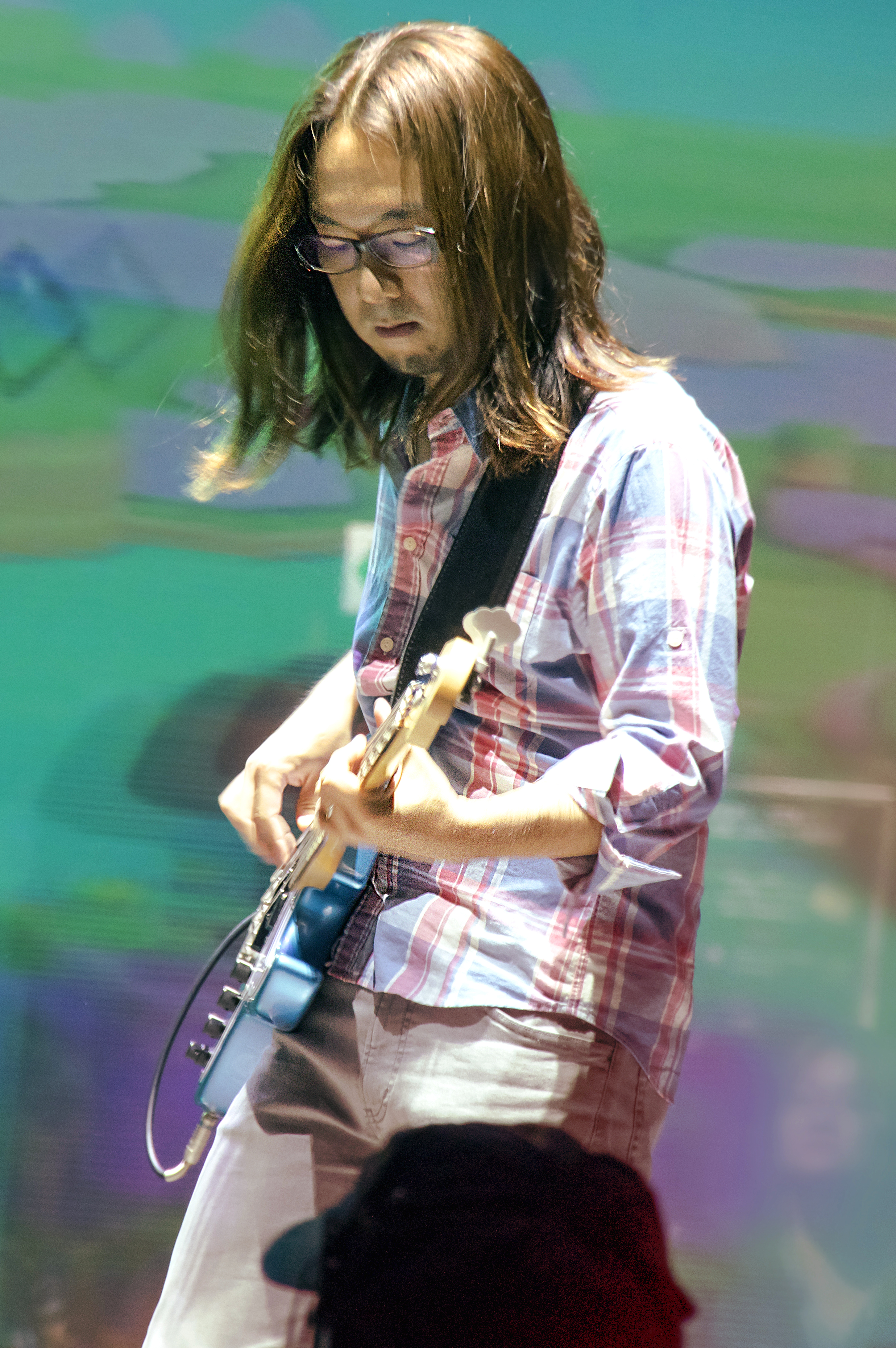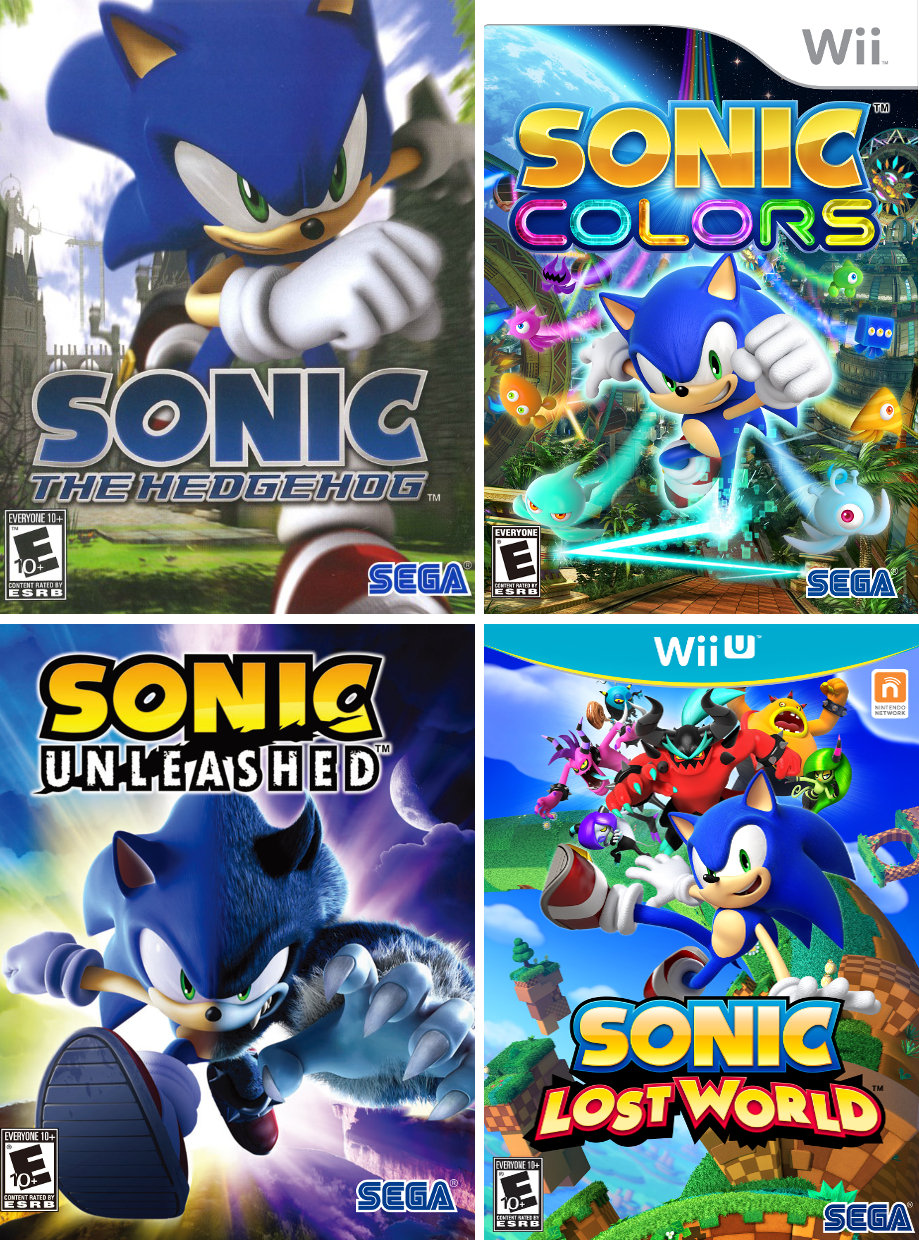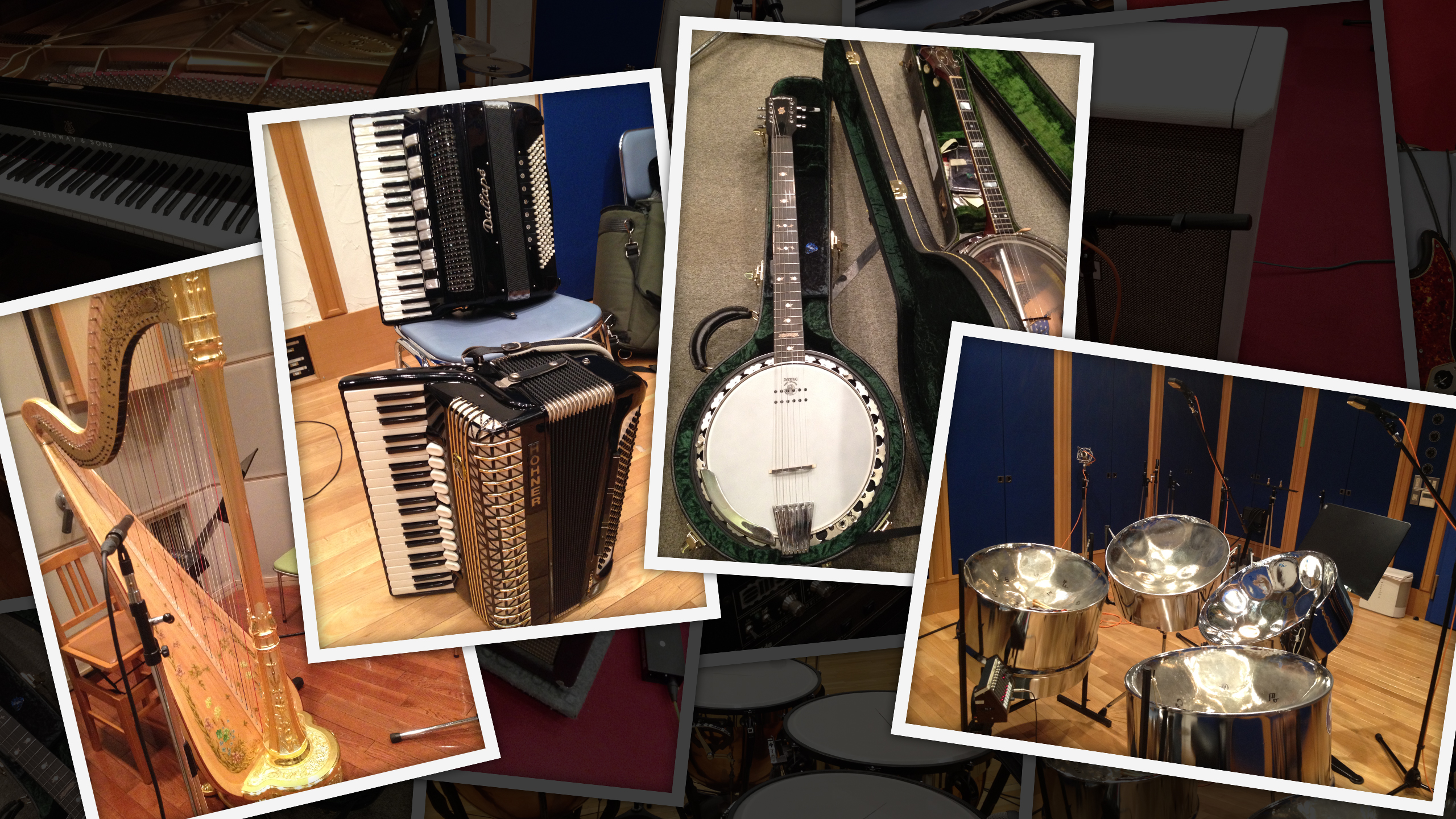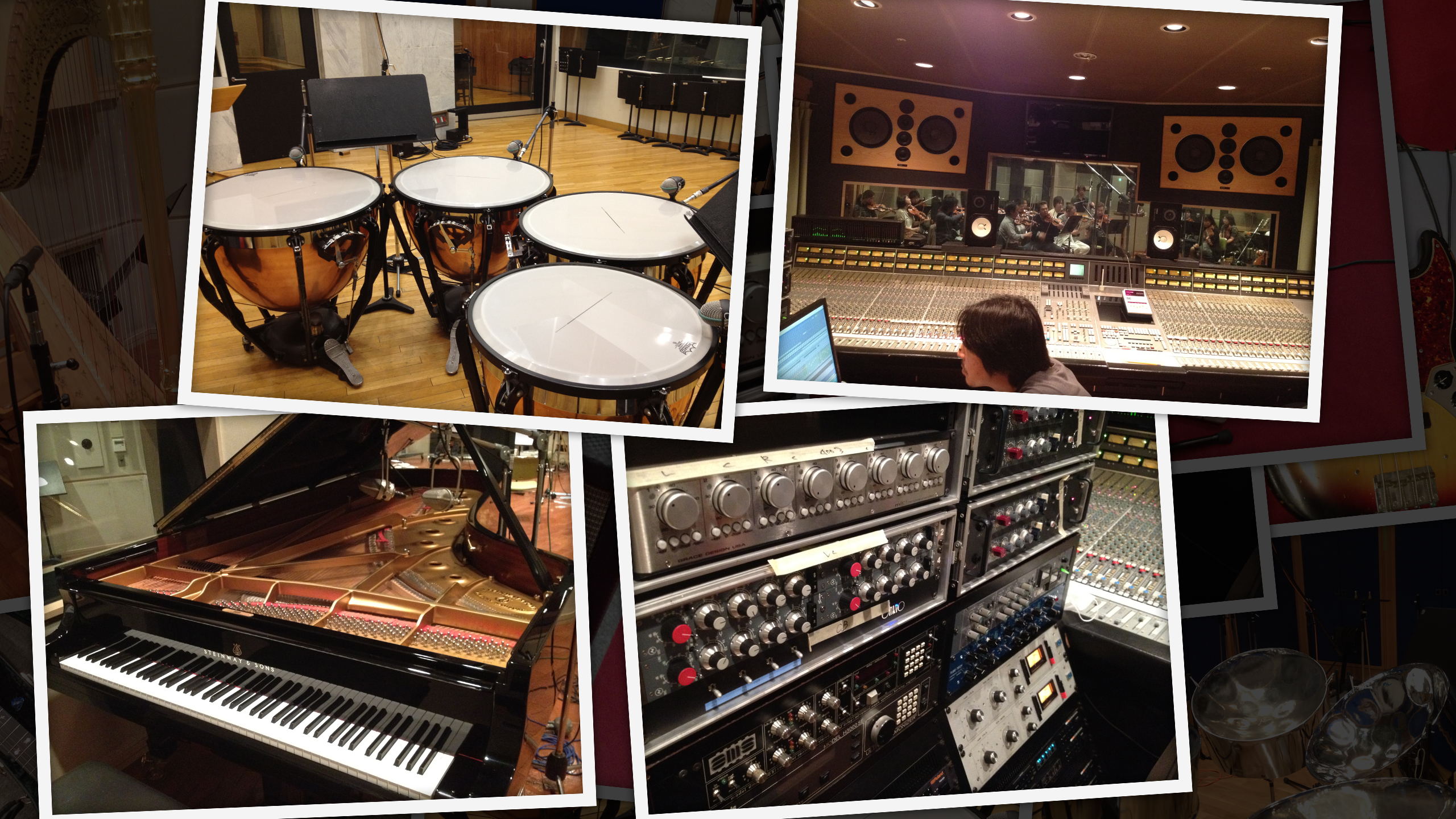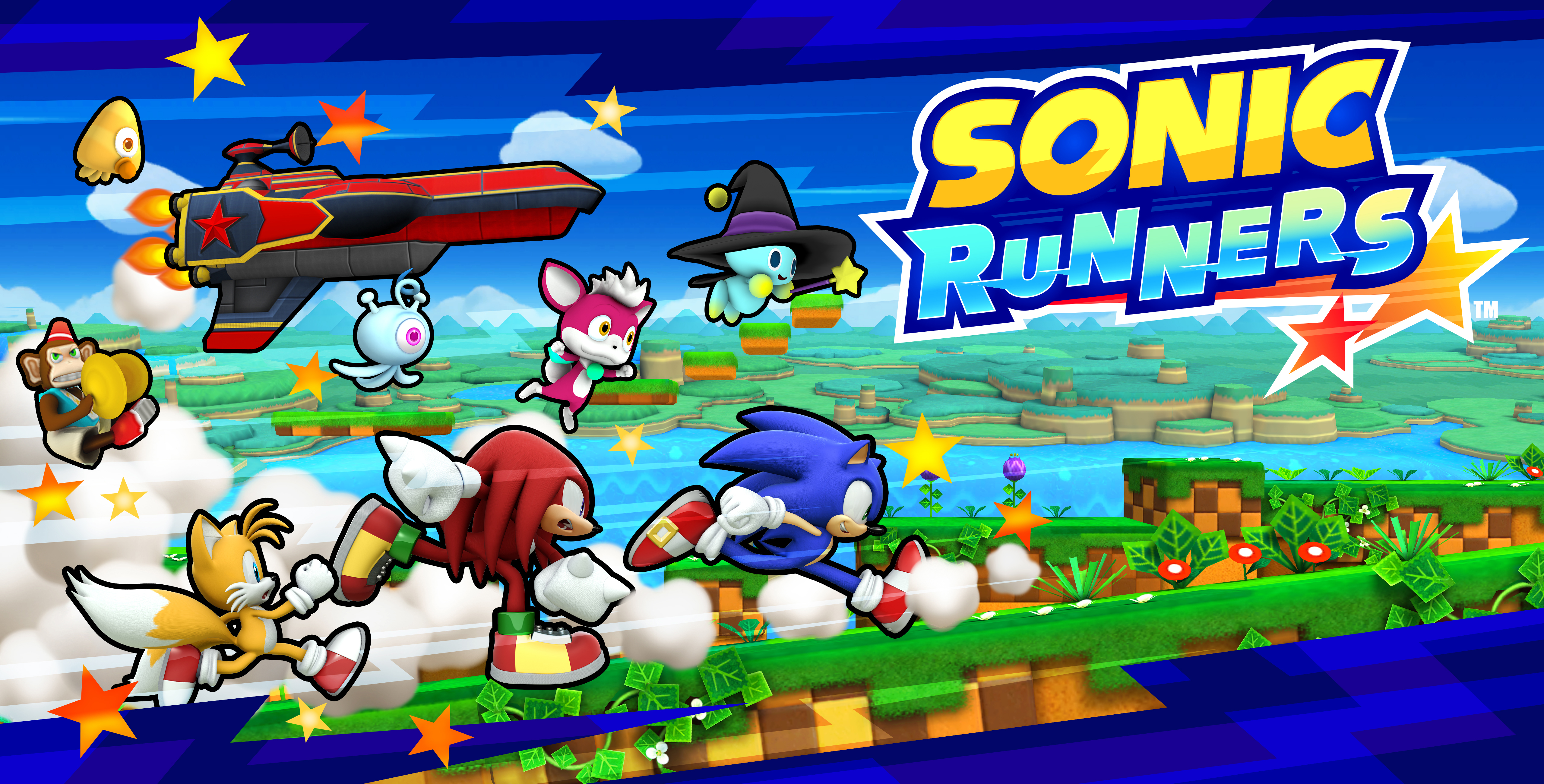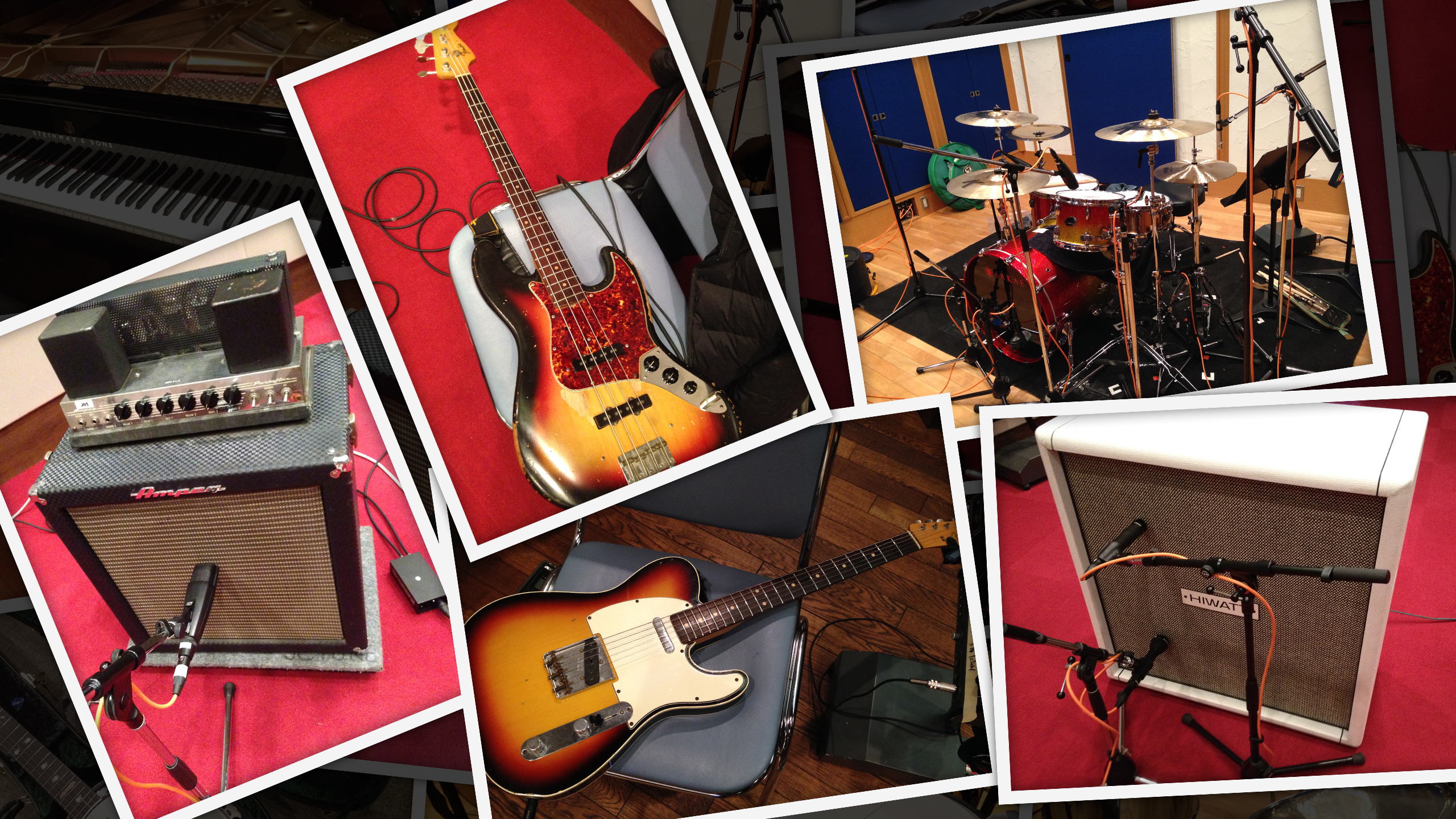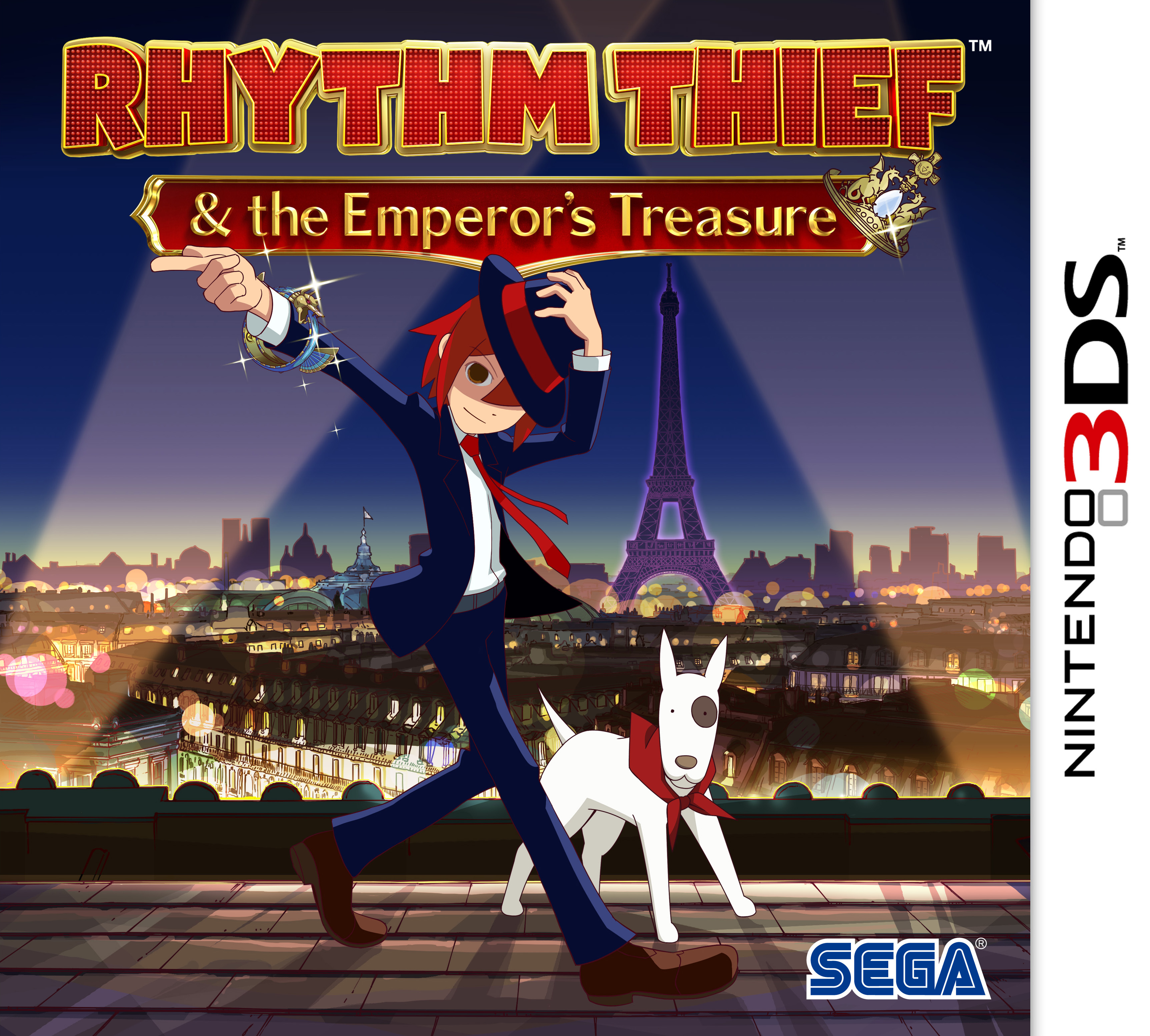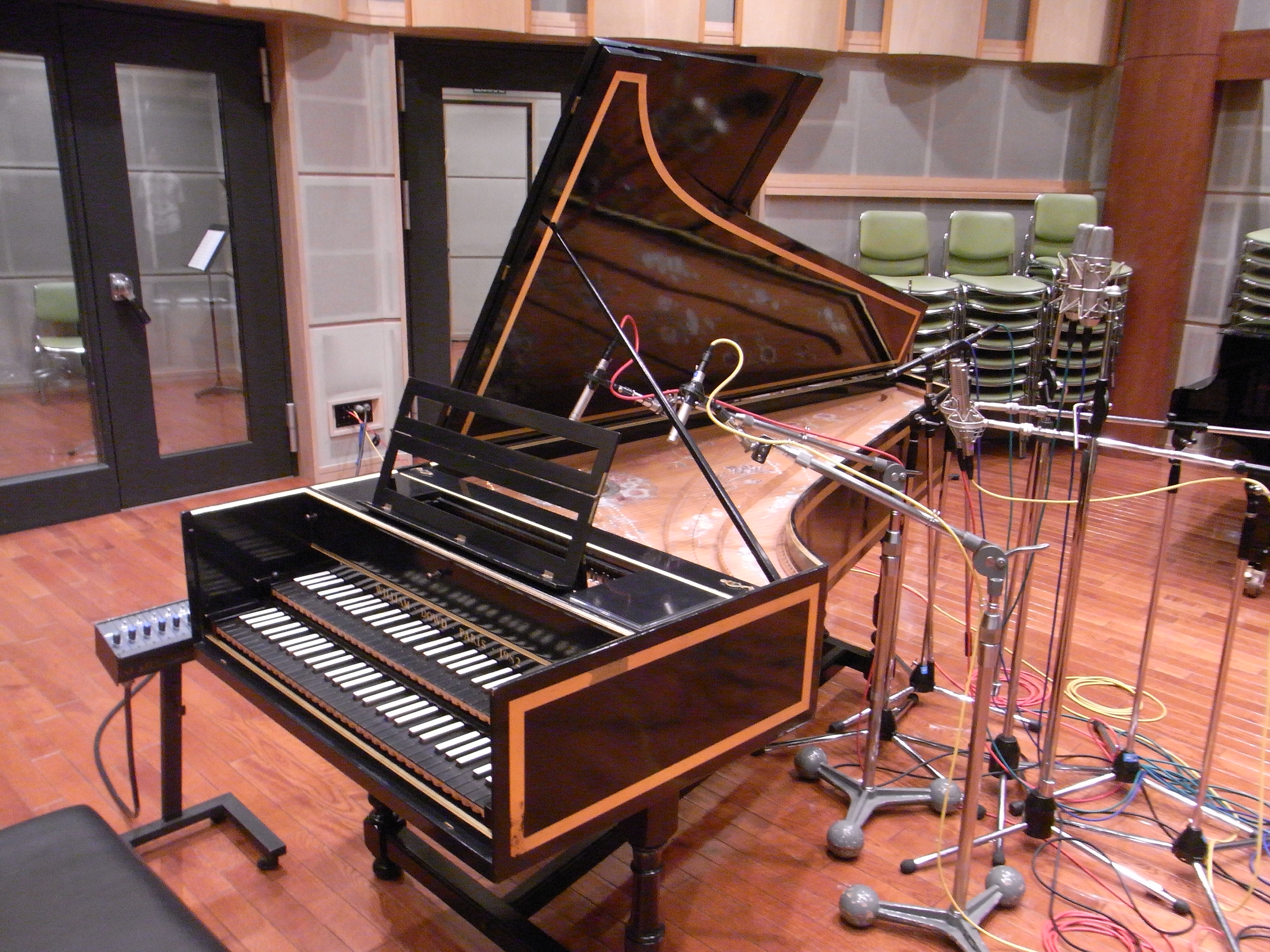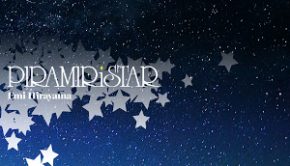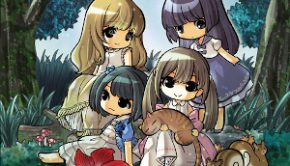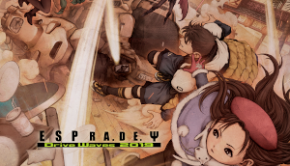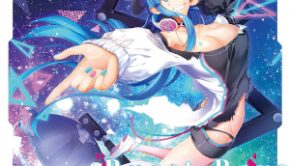Tomoya Ohtani Interview: Sonic Music for a New Generation
Tomoya Ohtani has served as the sound director and lead composer for many of Sonic the Hedgehog’s outings over the last decade, among them Sonic Unleashed, Sonic Colors, and Sonic Lost World. With their catchy theme songs, diverse styles, and rich orchestrations, these soundtracks have won the praise of a new generation of Sonic fans.
In his extensive interview, conducted in conjunction with SEGA, Ohtani puts the focus on three of his latest works, Sonic Lost World, Sonic Runners, and Rhythm Thief & The Emperor’s Treasure. Along the way, he discusses his inspirations for the soundtracks, details some of his favourite tracks, and talks us through his production processes.
Interview Credits
Interview Subject: Tomoya Ohtani
Interviewer: Chris Greening
Translation & Localisation: Tomoko Akaboshi, Gerardo Iuliani
Editor: Chris Greening, Yurie Ikegaya
Coordination: Yurie Ikegaya
Interview Content
Chris: Tomoya Ohtani, many thanks for talking to us today. Could you first explain your history in the Sonic series?
Tomoya Ohtani: The first Sonic title I took part in the production of was Sonic Adventure 2 (2001). I was in charge of the song for the Knuckles’s stage, which featured a rap element, and parts of the songs for the Chao Garden and Chao Race. I went on to compose the “Hang Castle” stage theme for Sonic Heroes (2003) and helped out with some songs for Shadow The Hedgehog (2005). I got to work as a sound director for the first time with Sonic The Hedgehog (2006). Since then, I have mainly worked as a sound director and a lead music composer on the mainstream of the Sonic series.
Chris: Over the years, you have taken the Sonic series in new directions as the sound director for Sonic the Hedgehog (2006), Sonic Unleashed, and Sonic Colors. Looking back, what do you feel are the main innovations you have made for the franchise’s music and sound? What inspired these changes?
Tomoya Ohtani: As Sonic the Hedgehog (2006) was our first title for PlayStation 3 and Xbox 360, I aimed to emphasise that it was a epic next-generation title. For example, “His World” opens with some grand string sections before moving into the main theme song.
For Sonic Unleashed (2008), I tried to capture the high-speed action that was to redefine the gameplay of the series. The main theme song “Endless Possibility” is a definitive example of this and was also the first theme song I composed for the series using a full orchestra. Given the game took place across the world, I also took in elements from various kinds of world music and focused quite a bit on using them to express the flavour for each region.
For Sonic Colors (2010), given the game was set in a space amusement park, I expressed more of a sci-fi feel. For example, “Reach for the Stars” is an impressive electro-pop song that serves as the main theme for the game.
As you can see, regardless of the game, I always do my best to express through music the greatest features each game has. It’s because of this that I can adopt all sorts of musical approaches and end up having a lot of fun while doing so.
Chris: More recently, you composed the vast majority of the soundtrack for Sonic Lost World. Could you tell us more about what inspired you take the music in even more light-hearted, upbeat approach than other Sonic titles?
Tomoya Ohtani: Sonic Lost World (2013) featured several new terrain types like tubes and spheres, codified visual expressions, and a great variety of gameplay. Given that the game design approach was so overhauled, the songs I composed had to match these new concepts musically.
Instead of adopting a heavy, hard-edged sound, I thought in particular that freely using all sorts of live instruments and injecting a light pop vibe would fit this game well.
Chris: Could you share with us your inspirations for the main theme, “Wonder World”?
Tomoya Ohtani: I composed the main theme “Wonder World” the way I did because the producer requested I make it using an orchestra. As this was the theme song, the concept I was fussiest about was to create an “orchestral theme for an action game”.
By combining the rich sounds of a full orchestra with an exciting melody, I believe I produced an impressive piece filled with adventurous qualities. The intro and the hook are meant to express the feel of new adventure, with the strong core melody capturing Sonic sprinting off to face the world.
Chris: How did you capture the various zones featured in the game, for example Windy Zone, Frozen Factory, and Lava Mountain?
Tomoya Ohtani: For the BGMs for each stage, I made them so that players would imagine how each stage would look upon listening to the songs. So they each have symbolic yet easy-to-understand melodies, and I chose characteristic sounds to represent them. I tried to freely produce and create music for each stage while adopting all the possible methods of musical expression I could.
“Windy Hill – Zone 1” was the first song I made for this game and incorporates all of the elements I wanted to express for it: It has an exciting feeling of being the starting point for a new adventure, with an intro that will always feel fresh no matter how many times you listen to it, an exhilarating and nice feeling sense of running across the grasslands, and a rhythm and arrangement that changes every now and then. Aside from the synthesized arpeggio, everything is played through live instruments.
For “Frozen Factory – Zone 1”, I expressed through synthetic sounds both the glittering feeling of the snow and the mechanical atmosphere of a industrial facility. Regardless of the instrumentation used, the melody and the entirety of the piece still give off that “pop” flavour. On the other hand, since “Lava Mountain” is centred on lava-covered fortress, I tried using dubstep elements such as a wobble bass in order to express the simmering and boiling lava running throughout.
Chris: Besides these tracks, what are your other favourite tracks from the soundtrack?
Tomoya Ohtani: Aside from them, there are other songs I like a lot. The theme of the demons “The Deadly Six Theme”, the beehive stage’s theme “Honeycomb Highway”, the song of the undersea cave “Sea Bottom Segue”, the desert stage’s “Desert Ruins – Zone 1”, the tango-inspired “Midnight Owl”, and the song of the stage where you ride a dragon “Dragon Dance”.
As can be seen from the above examples, it wouldn’t be an exaggeration to state that Sonic Lost World was the game in which I focused the most on expressing a variety of feelings and elements through each piece.
Chris: You worked closely with Takahiro Eguchi to record the soundtrack for Sonic Lost World with orchestra and session musicians.
Tomoya Ohtani: Yes, Takahito Eguchi-san is one of the arrangers I trust the most. I’ve asked to have him to be part of all my projects from Sonic the Hedgehog (2006) onwards. I particularly value his skills as an orchestrator, strings section arranger, and keyboardist. He also composes dramatic music for the cutscenes.
Chris: Could you tell us more about how you orchestrated and recorded this score together?
Tomoya Ohtani: Whenever I create a piece of music, I start by composing the melodies and basis for the track through my DAW (digital audio workstation). I then wait to get an OK from both the producer and director if the musical trends fit the current project.
After that, I start doing arrangement and orchestration work with Mr. Eguchi. We approach each track on a song-per-song basis: there have been cases where we needed to start from scratch on the orchestration, while there were others where we could guide ourselves by a guide track I made up. The musical vision we have ends up taking a concrete shape as Mr. Eguchi sends me orchestration demos he made on the DAW and I discuss them with him.
And at the same time we’re focused in making the orchestration, I also start carrying out the preparations for the recording with the music coordinator, as I’m the sound producer. The orchestral pieces for Sonic Unleashed (2008) were played by the Tokyo Philharmonic Orchestra and recorded in a studio, but the ones for Sonic Lost World (2013) were recorded in a different method, in which the orchestra was organized into different session musicians: strings section, brass section, woodwind section, and such.
For Sonic Lost World, the sound I wanted wasn’t the grand and rich one that would be achieved from a full orchestra playing at once in a large hall. Instead what I actually wanted was an orchestral sound that had a feeling of cheerfully taking off and going away. That was why I ended up doing overdubbing at the studio: all because I thought it would fit the game the best.
Chris: Could you tell us more about the post-production?
Tomoya Ohtani: Once we finished recording all the parts, we started the editing work in ProTools. Once I was put in charge of the editing work, I gave instructions to the engineers and let them do their thing.
After that, we started with the mixing down. It was there where we made the tracks in 2ch Mix and 5.1 Surround Mix and divided them according to the use they were to be given: either as in-game tracks, music for the promotional videos. or for the soundtrack.
I think everything came out so well because we did everything as carefully as we could throughout the whole process: planning, composing, arranging, choosing the musicians, recording, editing, mixing down, and mastering.
Chris: How essential do you think the live musicians were for fulfilling your intentions of the soundtrack?
Tomoya Ohtani: Adopting the use of live musical performances remarkably increased the expressive power of the music. But I think the most important part is the composition process, because it is what allows us to use that expressive power to its limits and also serves as the core to everything else.
Sonic Lost World digital soundtrack releases:
Sonic -Lost World- Original Soundtrack Without Boundaries Vol. 1
Sonic -Lost World- Original Soundtrack Without Boundaries Vol. 2
Sonic -Lost World- Original Soundtrack Without Boundaries Vol. 3
Chris: Most recently, you penned the soundtrack for Sonic Runners. What were the unique challenges that came from scoring a smartphone title compared to a consumer soundtrack?
Tomoya Ohtani: Sonic Runners is a game app for smartphones, but all the songs that are used in it were made in the same way I’ve ever made music for the normal Sonic series: I compose the base melody, make demo arrangements as a basis, go into the studio with the musicians playing each part, and record the live performances.
So in other words, there is really no difference in the methods I use for making music regardless of if it’ll be used in a smartphone app or a consumer game. The quality of smartphone game apps has increased in recent years. As I’d like to make sure players enjoy fully-fledged soundtracks even for smartphone games, I created the music by dedicating plenty of time for recording, just as I did for the soundtracks I’ve created for consumer games.
Chris: Can you tell us more about what we can expect from the Sonic Runners soundtrack?
Tomoya Ohtani: For Sonic Lost World, I created a wide variety of music and styles by incorporating the sounds of various instruments in each of songs. By contrast, the main instruments I used for the music in Sonic Runners are the drums, bass, guitar, and piano. I made these songs by focusing on creating a catchy band sound. Given the band sound I used here goes back to my roots, it was very fun to make the music for it.
Chris: Now that the first volume of the soundtrack has been released, when will Vol. 2 be released?
Tomoya Ohtani: The Sonic Runners soundtrack is still ongoing. I’m continuing to make new songs that’ll get used for time-limited events, so please look forward to them. Given the number of songs keep on increasing, I think we’ll be able to release a second volume at some point.
Sonic Runners digital soundtrack releases:
Sonic Runners Original Soundtrack Vol. 1
Chris: You were also the music director for Rhythm Thief & The Emperor’s Treasure. What was it like to work on a new IP with this title?
Tomoya Ohtani: Taking part in a new project is a very fresh experience. I had quite a bit of fun working on Rhythm Thief & The Emperor’s Treasure. I could make all sorts of songs while I worked on the projects related to Sonic, but for this title, I had good opportunities to take challenges I had to pass on before. For example, making songs with jazzy tones.
Chris: Could you elaborate on how you captured the Parisian setting with your jazzy, eclectic themes?
Tomoya Ohtani: Rhythm Thief & The Emperor’s Treasure is a story that has Paris as its setting. The keyword I expressed and gave most importance to was “Thief”. This is what creates the world setting’s music. “Theme of Phantom R” hybridises jazz elements such as a quick BPM with Baroque musical elements such as live harpsichord performances. By blending them together, I was able to capture the dramatic developments in the story as well as the thief’s own kind of elegance.
Above is a picture of the harpsichord we used for the recording. It’s a replica of an instrument from the 1800s. As it has a tone that isn’t fully captured in keyboard sound sources, I was able to authentically capture the sound it creates by recording with a replica instead. We were able to provide the game with a very high sound quality, despite it being for a handheld gaming device, i.e. the Nintendo 3DS.
I also have a very nice memory of us having invited 600 of the people that bought the game to a live concert for its music. That was a very precious experience for me (see the picture below).
Chris: How did you develop on this approach for the Rhythm Thief & The Paris Caper?
Tomoya Ohtani: I continued a similar approach for the iOS game app Rhythm Thief & The Paris Caper. I made the soundtrack for it by recording many live performances that would maximize the appeal and greatness for the series’ music.
Rhythm Thief digital soundtrack releases:
Rhythm Thief & The Emperor’s Treasure Original Soundtrack Vol. 1
Rhythm Thief & The Emperor’s Treasure Original Soundtrack Vol. 2
Rhythm Thief & The Emperor’s Treasure Original Soundtrack Vol. 3
Rhythm Thief & The Paris Caper Original Soundtrack
Chris: Many thanks for your time today, Tomoya Ohtani. Is there anything else you’d like to say about your works? What can we expect from you in the future?
Tomoya Ohtani: Thank you very much for having listened to the music I’ve made through these games.
From the oldest pieces I made for the Sonic series, which were the stage themes for Knuckles in Sonic Adventure 2 all the way up to the currently ongoing Sonic Runners, I’ve made all sorts of songs. All of them are musical pieces I really like.
As I’m the kind of composer who changes my approach to music on each title, I will try to challenge myself to create all sorts of new types of music in my future works. Whatever I compose will be a perfect fit for whatever the game will be. But regardless of what style my tracks, I think I’ll give more importance to pop-flavoured melodies and catchy sounds from now on. So please continuing supporting me!
And thank you for reading this interview!
Tomoya Ohtani
SEGA Games Co., Ltd.
Posted on December 5, 2015 by Chris Greening. Last modified on December 5, 2015.

